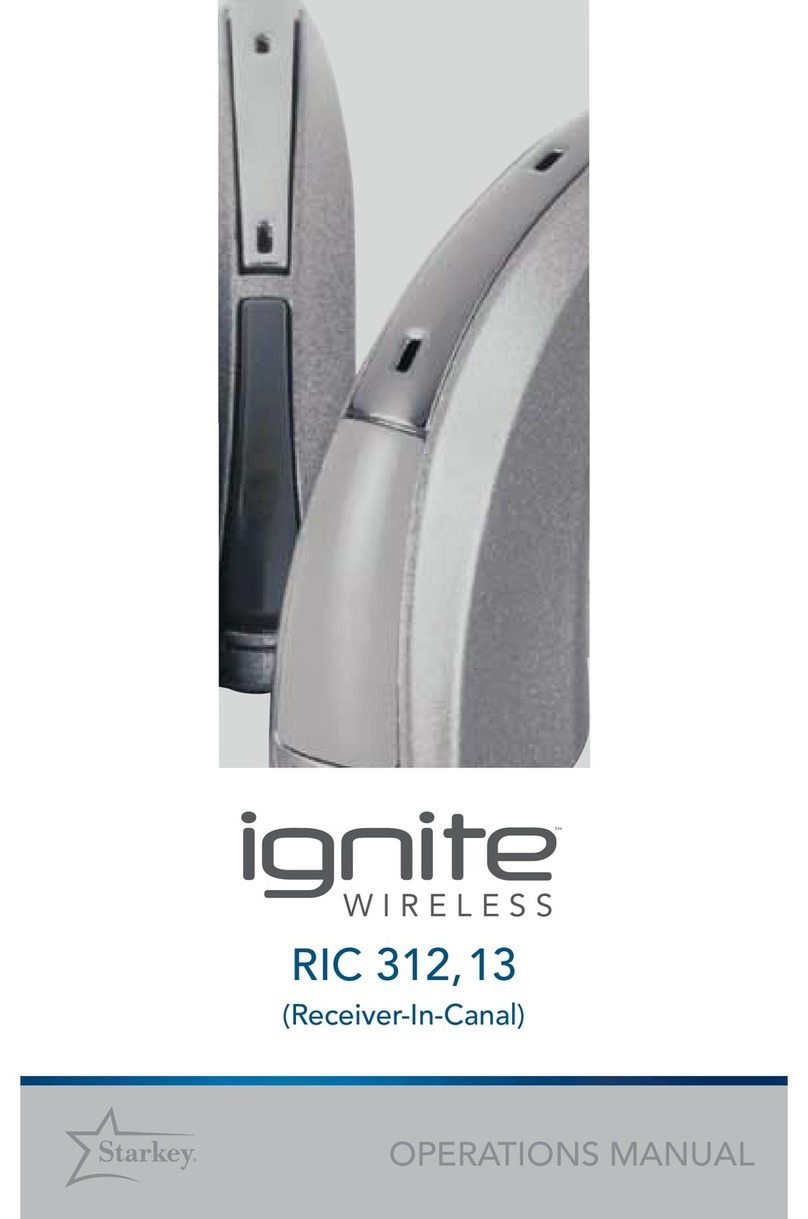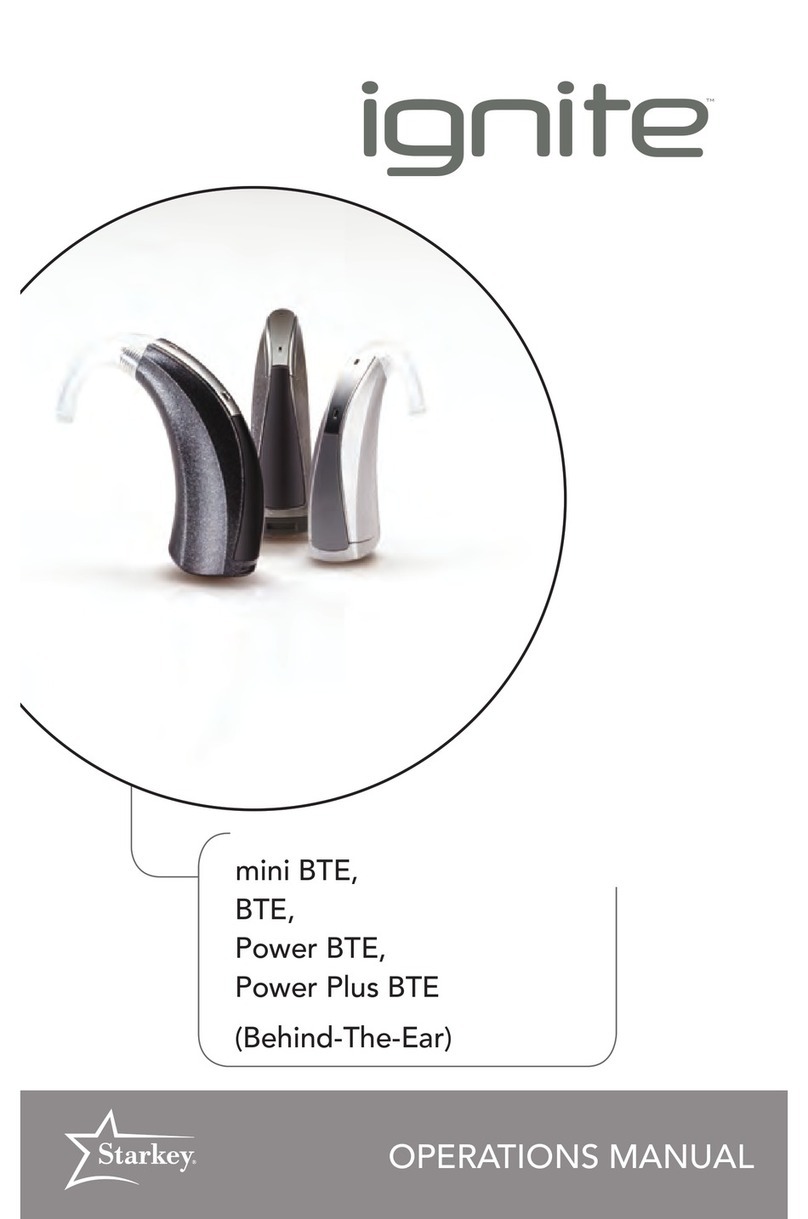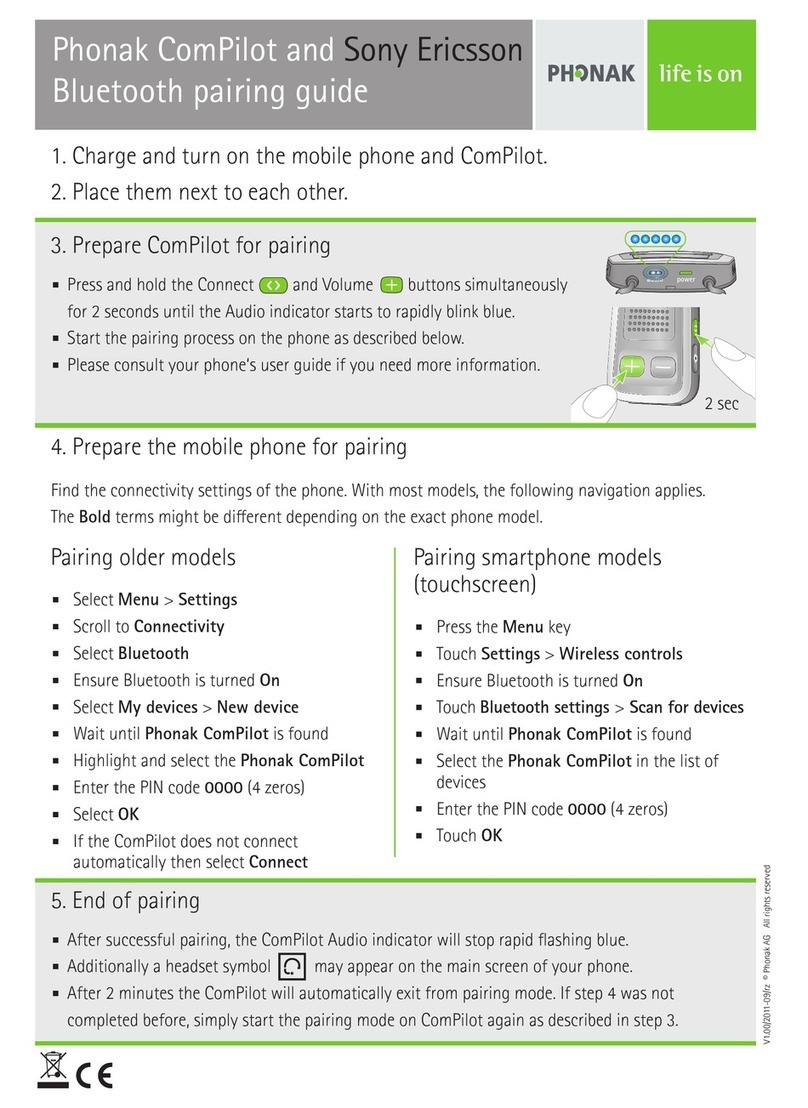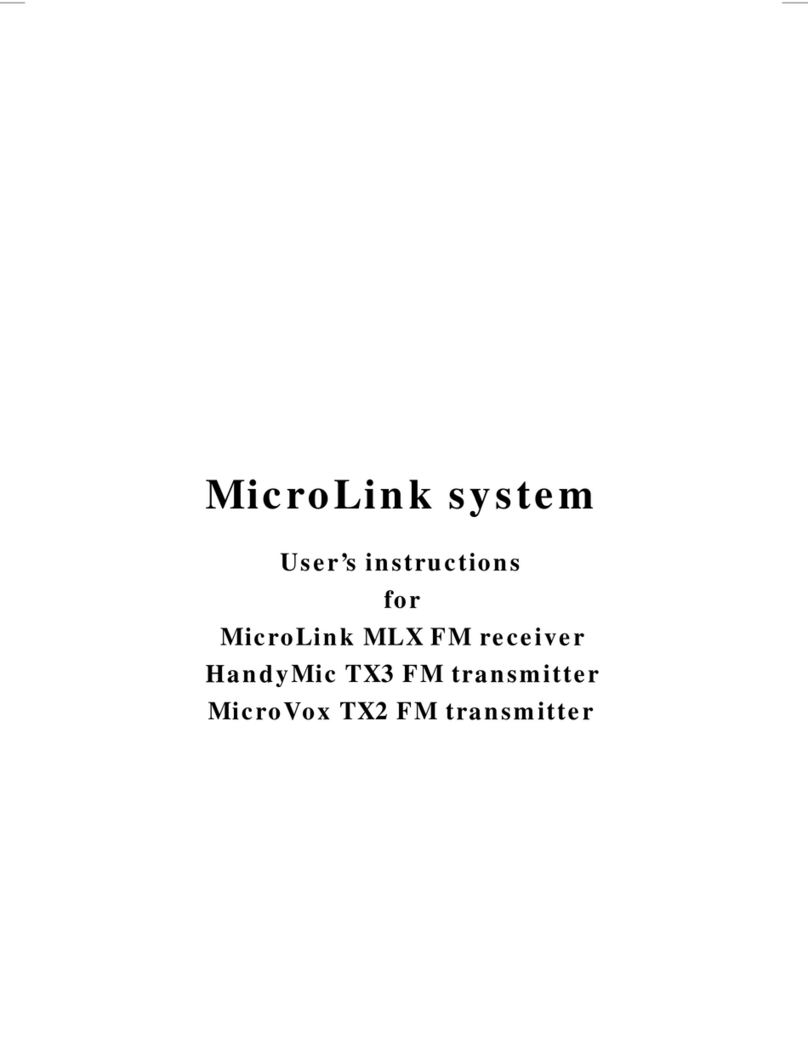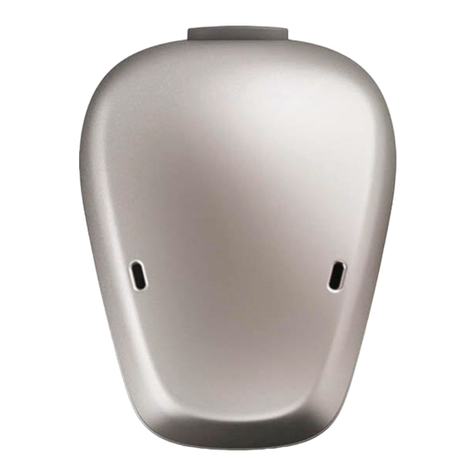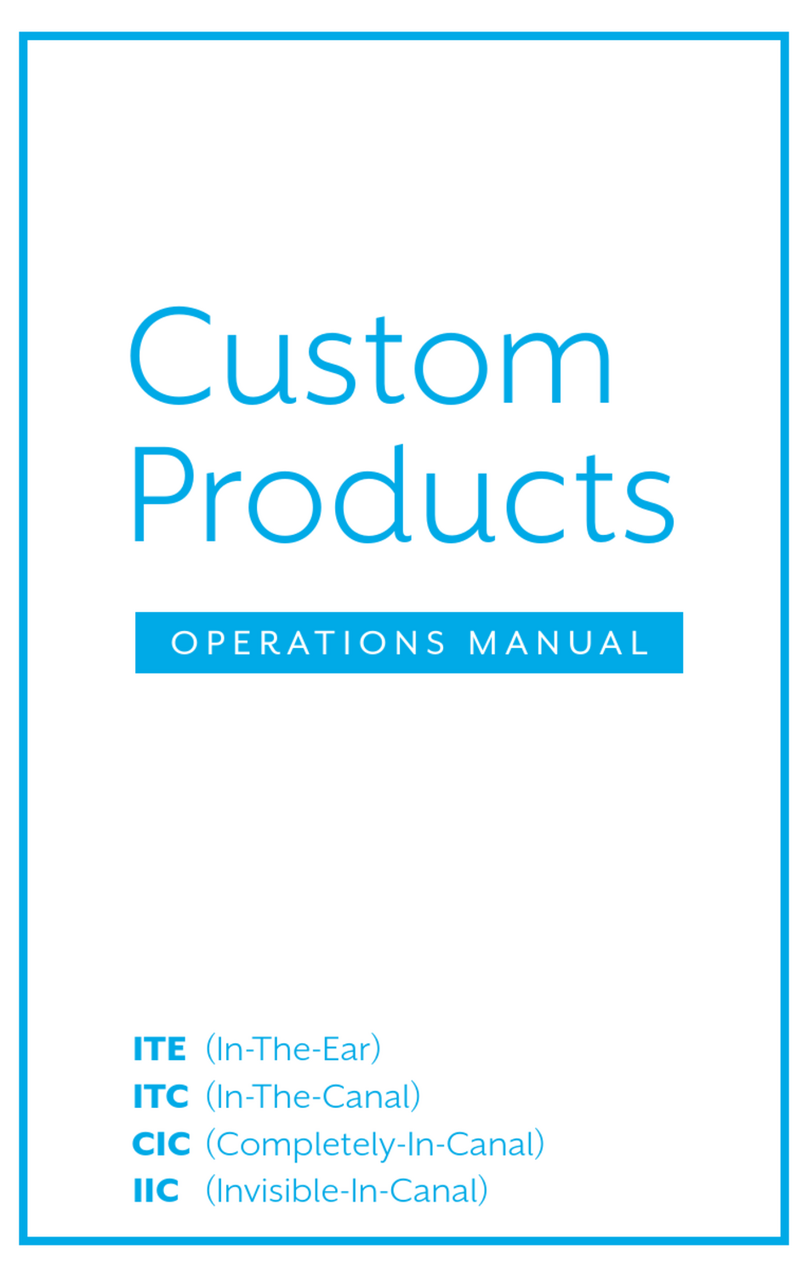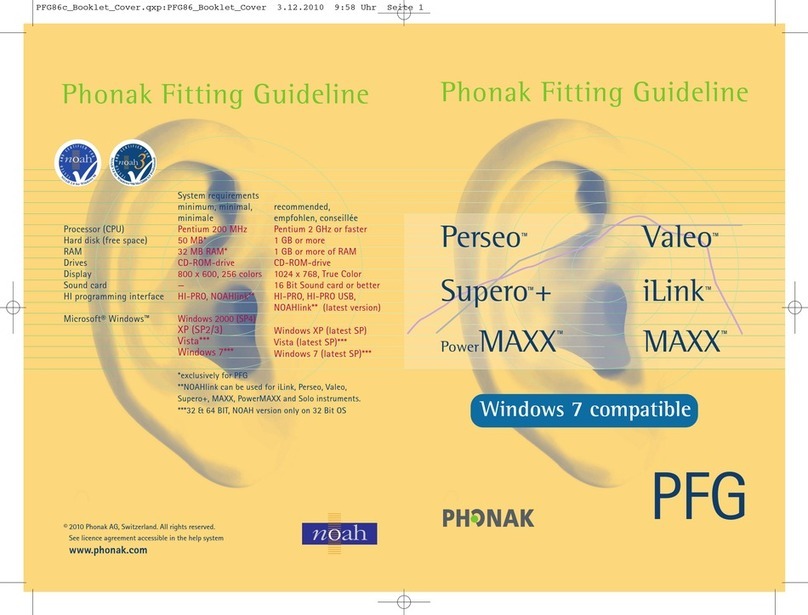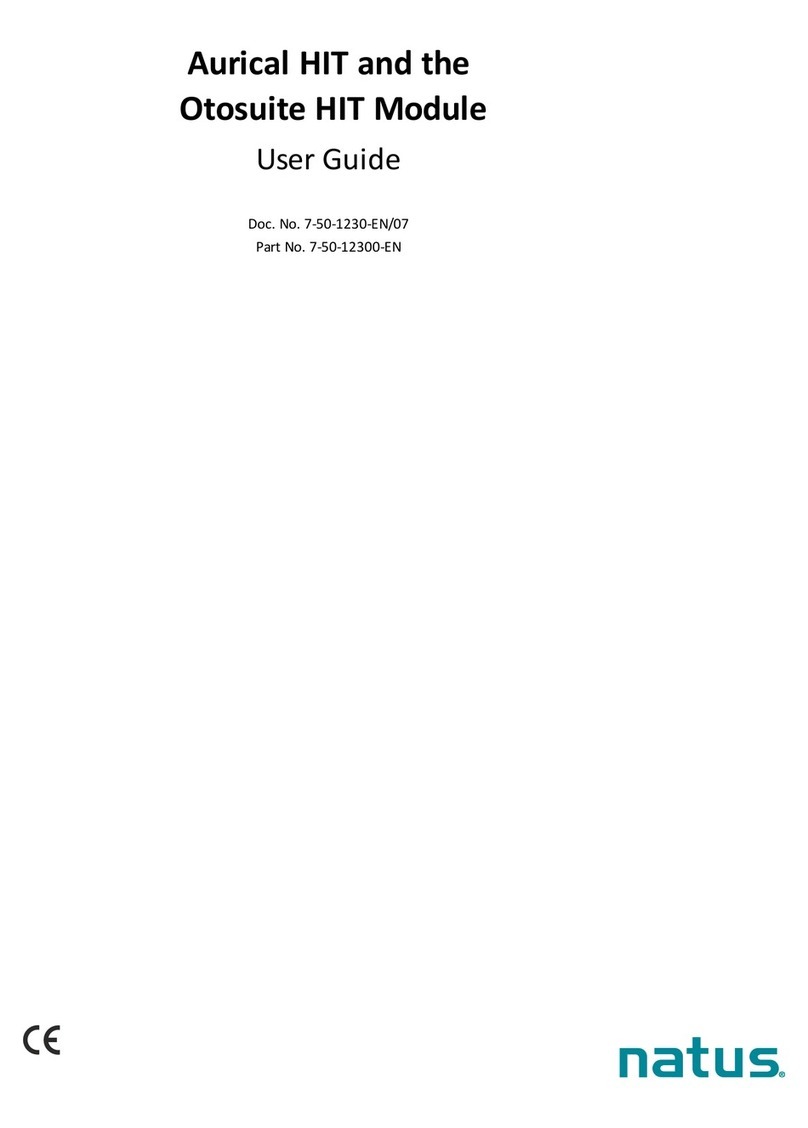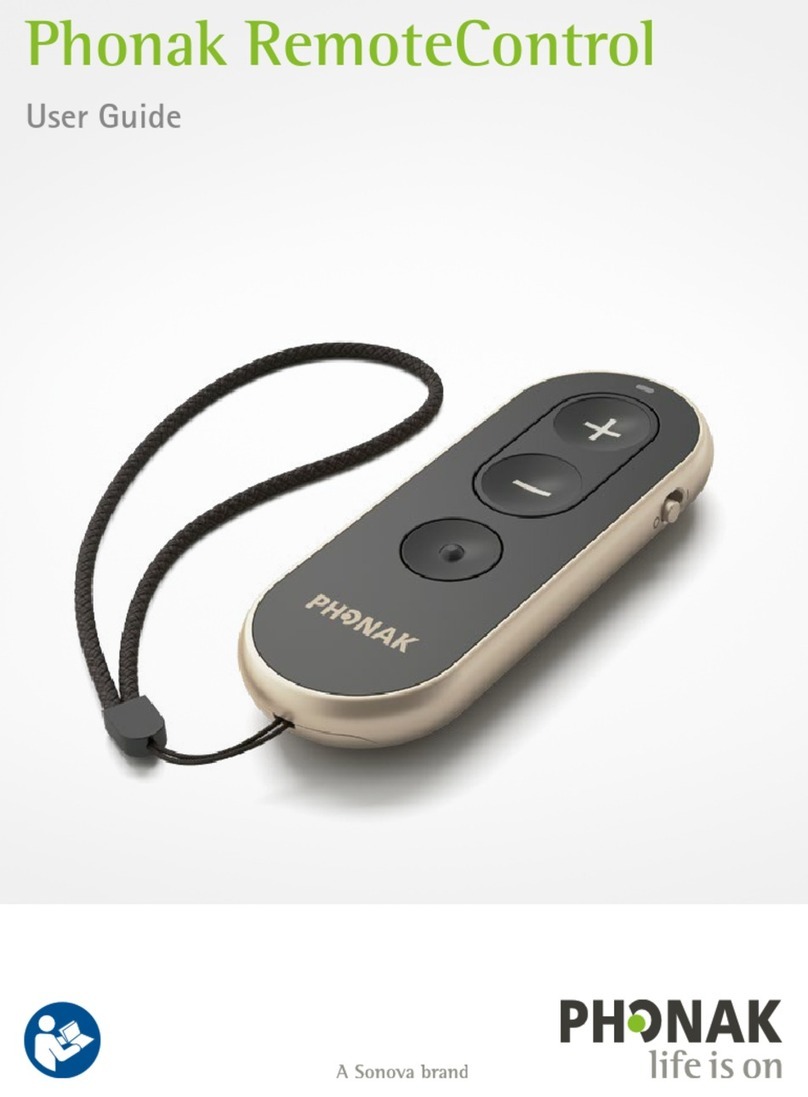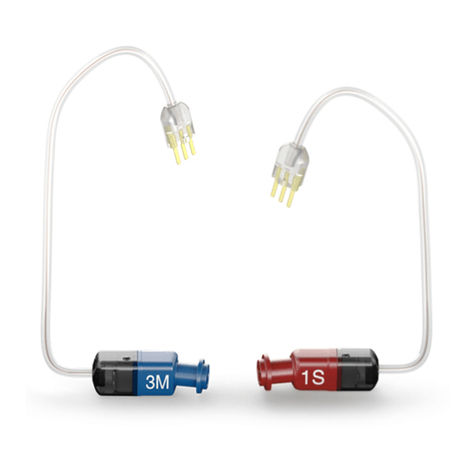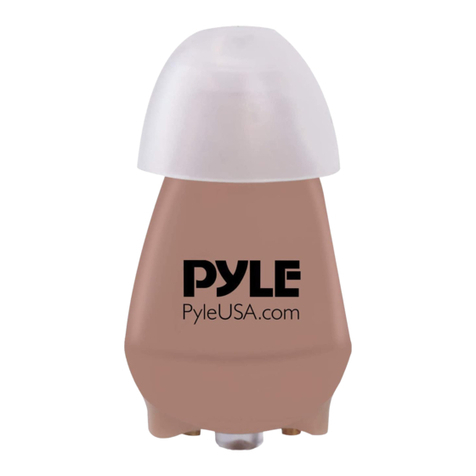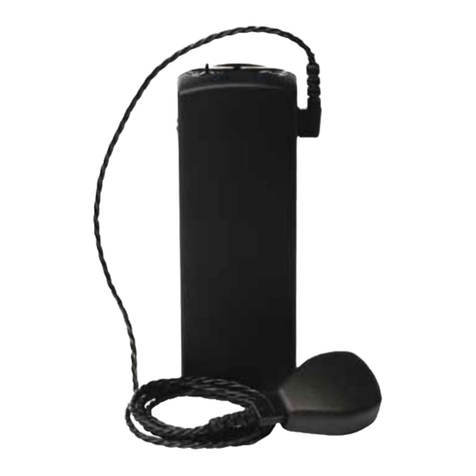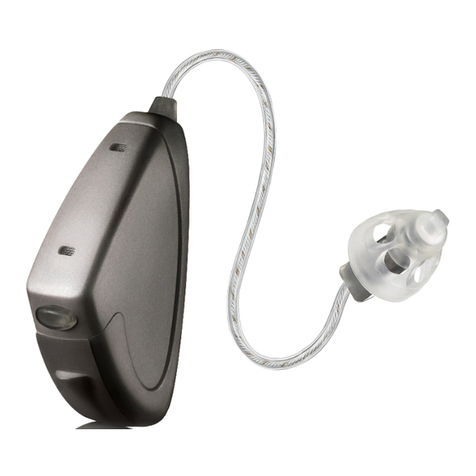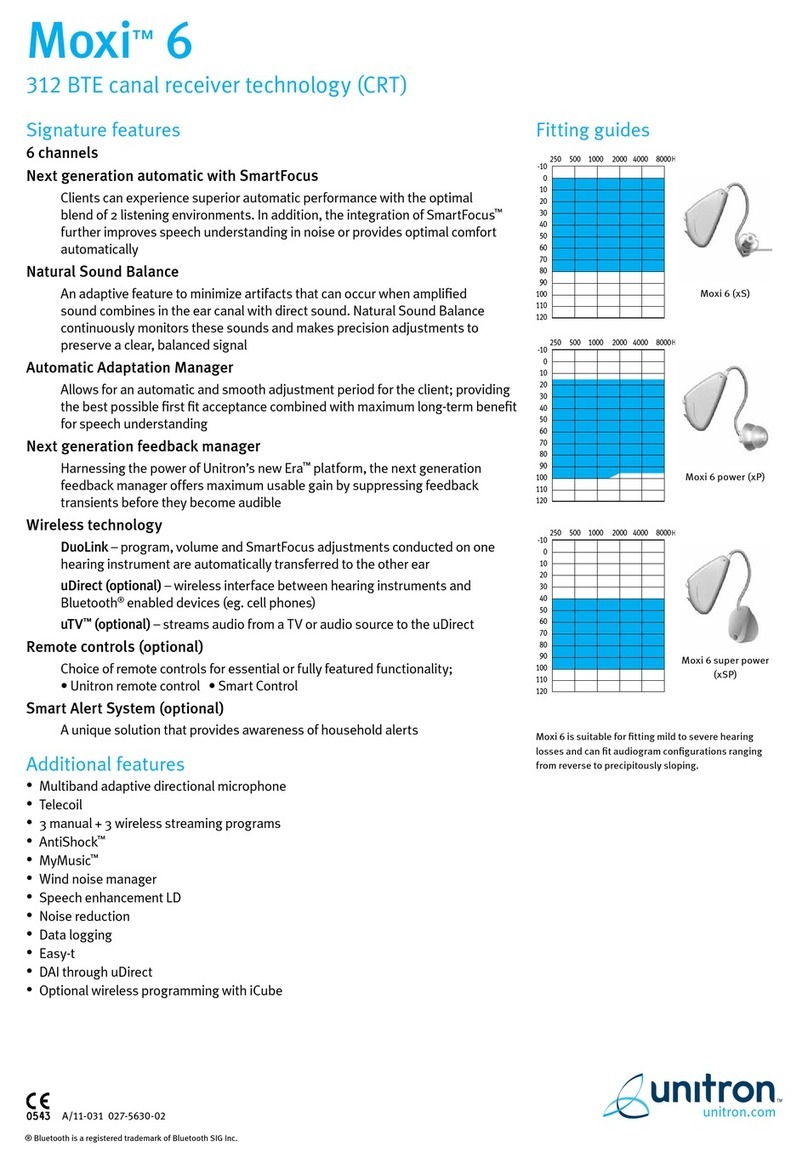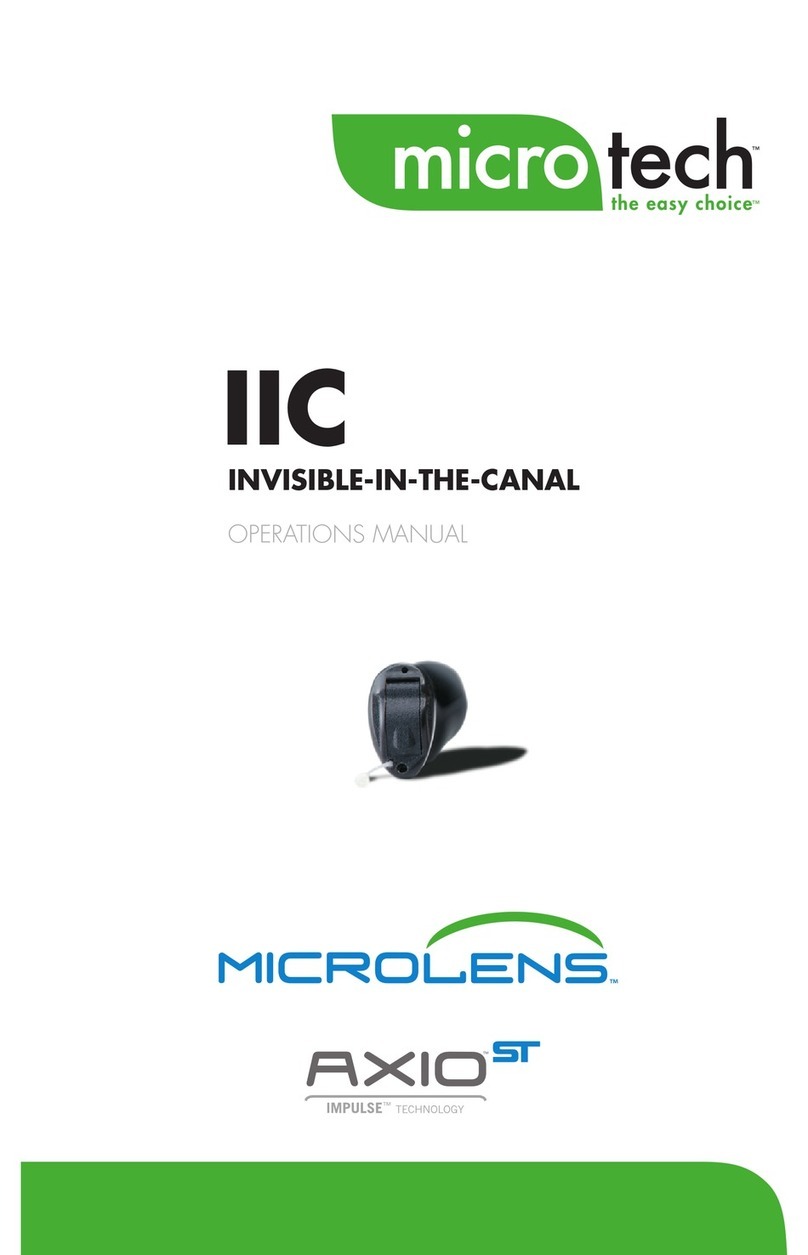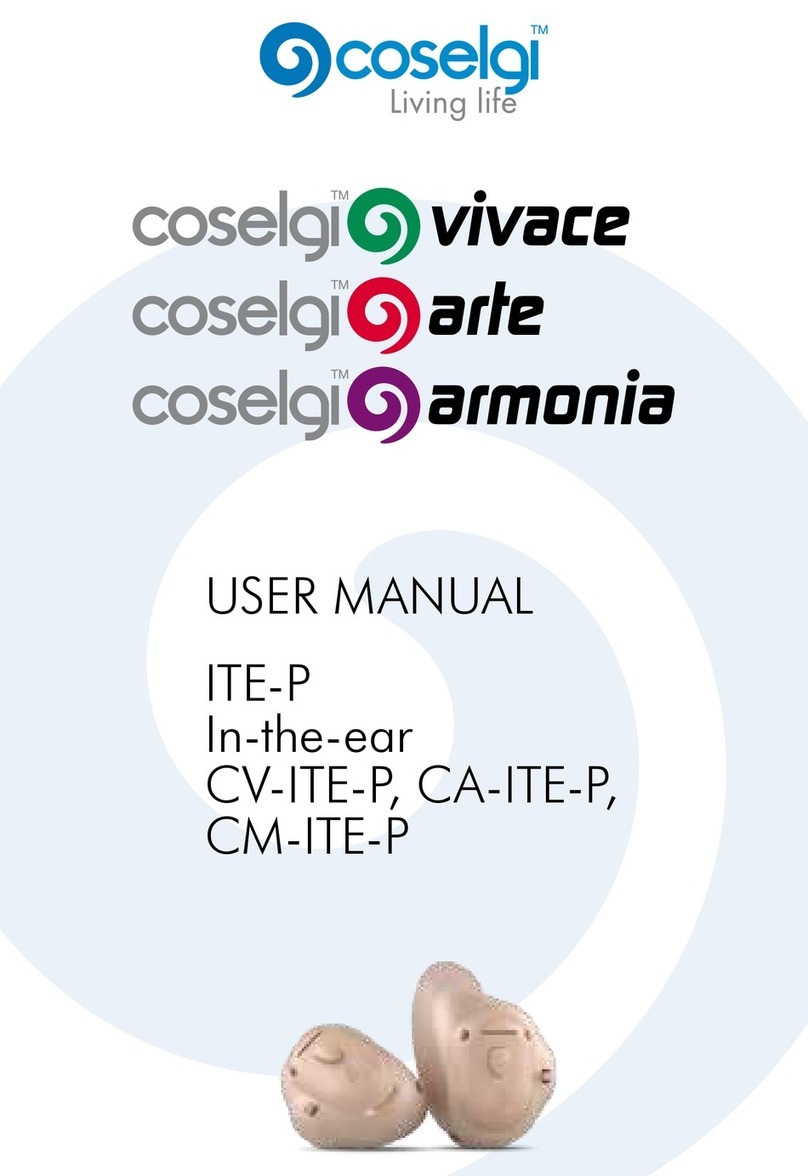Ignite ITE User manual

Custom Product Family
ITE (In-The-Ear),
ITC (In-The-Canal),
CIC (Completely-In-Canal)
OPERATIONS MANUAL

Overview
ITE Overview .............................. 4
ITC Overview .............................. 5
CIC Overview.............................. 6
Preparation
Batteries.................................. 7
Battery Indicators........................... 9
Insertion and Removal ...................... 10
Operation
On & Off ................................ 12
Volume Control ........................... 13
Multimemory ............................. 15
Directional Settings ........................ 16
Telephone Use ............................ 16
Hearing System Care
Instrument Care ........................... 19
Service and Repair ......................... 20
Troubleshooting Guide ..................... 20
Tips for Better Communication
For You.................................. 21
For Your Family and Friends ................. 22
FDA Information
Required Information ...................... 23
Limited Warranty. . . . . . . . . . . . . . . . . . . . . . . . . . . . . . 25
Table of Contents

3
Overview
My hearing instrument is a/an:
ITE (In-The-Ear) see page 4.
ITC (In-The-Canal) see page 5.
CIC (Completely-In-Canal) see page 6.

4
ITE Overview
Features, Controls and Identification
Your hearing system controls include:
1. Microphone opening(s)
2. Battery compartment (on/off control)
3. Vent (optional)
4. Sound outlet (receiver) and wax protection system
Your hearing system can be identified by:
5. Location of serial number:
RED Right
BLUE Left
1
2
3
Multifunction
Button (Optional)
Volume Control
(Optional)
ITE Battery Size: 13
4
0
0
-
0
0
0
0
0
0
0
0
5

5
Features, Controls and Identification
Your hearing system controls include:
1. Microphone opening(s)
2. Battery compartment (on/off control)
3. Vent (optional)
4. Sound outlet (receiver) and wax protection system
Your hearing system can be identified by:
5. Location of serial number:
RED Right
BLUE Left
1
2
3
4
0
0
-
0
0
0
0
0
0
0
0
5
Multifunction
Button (Optional)
Volume Control
(Optional)
ITC Battery Size: 312
ITC Overview

6
CIC Overview
Features, Controls and Identification
Your hearing system controls include:
1. Multifunction button (optional)
2. Microphone opening
3. Sound outlet (receiver) and wax
protection system
4. Battery compartment (on/off control)
5. Removal handle
6. Vent (optional)
Your hearing system can be identified by:
7. Location of serial number:
RED Right
BLUE Left
3
2
4
6
5
1
00-00000000
7
CIC Battery Size: 10

7
Batteries
Your hearing system uses a battery as its power
source. This battery size can be identified by the
orange (13), brown (312), or yellow (10) color code
on the packaging.
To insert or replace the battery:
1. Use the nail grip on the battery door.
2. Open the battery door gently and remove
the old battery.
3. Remove the tab from the new battery.
4. Line up the battery’s “+” sign (flat side of the
battery) with the “+” on the battery door.
5. Close the battery door.
My hearing instrument uses a:
13 battery (ITE) – Orange
312 battery (ITC) – Brown
10 battery (CIC) – Yellow
Preparation

8
Preparation
1 2
3 4
5

9
Battery Indicators
An indicator will sound when the battery voltage is
low. You have approximately 5 minutes* to replace
the battery. An indicator will sound just before the
battery stops working.
* Actual time between low battery indicator and shut
down will vary depending on environmental noise
levels and brand of battery used.
Helpful Hints
• NEVERFORCETHEBATTERYDOORSHUT;
thiscouldresultinseriousdamage;ifthedoor
will not close securely, check that the battery is
inserted correctly.
• Donotopenthebatterydoortoofarordamage
is likely to occur.
• Becauseoftheirsize,it’sagoodideato
change and replace batteries above a table
or desk to reduce the risk of dropping the
instrument or battery.
• Disposeofusedbatteriesimmediatelyinthe
proper waste or recycling container.
• Becausebatteriescanvaryinsizeand
performance, your hearing care professional
is your best source for lifespan estimates and
verification that you are using the proper size
and type.
Preparation

10
Preparation
Insertion and Removal
To insert the hearing instrument:
1.
Holdtheinstrumentwithyourthumband
forefinger on the outer edges of the case.
2.
Tilt your hand slightly forward and gently insert
the canal tip of the instrument into your ear canal
and rotate the instrument backward. Softly press
the instrument into place with your fingertip.
Warnings
Batteries are dangerous if swallowed. To help
prevent the accidental ingestion of batteries:
Keep out of reach of children and pets
Check your medications before taking them –
batteries have been mistaken for pills
Neverputbatteriesinyourmouth,astheycan
easily be swallowed
National Button Battery Ingestion Hotline:
202-625-3333
1 2

11
To remove the hearing instrument:
Grasp the instrument with your thumb and
forenger;gentlyrotateitasyoupulloutward.
Devices with removal handle: grasp removal handle
and gently remove from ear.
Helpful Hints
• Minorirritationandinammationmayoccur
as your ear becomes accustomed to having an
objectinit;ifso,pleasecontactyourhearing
care professional
• Ifanactualallergicreactionoccurs,alternative
materialsareavailable;contactyourhearing
care professional
• Severeswelling,dischargefromtheear,
excessive wax, or other unusual conditions
warrant immediate consultation with a physician
Preparation

12
Operation
Insert a battery and
completely close the
battery door.
To turn OFF:
Open the battery door
until the battery is no
longer touching the battery contacts.
Your instrument has a Power-On delay and may
require a few seconds to power on. You may hear
a tone series indicating that your device is fully
powered on.
On & Off
To turn ON:

13
Operation
Volume Control
Automatic Volume Control
Your hearing system has been set to a specific
volume level by your hearing care professional. If
sounds are generally too loud or too soft, please
contact your hearing care professional for advice
and adjustment.
Multifunction Button–Volume Control
Your hearing system uses the button to control
volume. Press then release the button until the
desired volume level is reached. Each press/release
changes the volume one increment.
Volume Settings
My hearing instrument volume is set automatically.
See below.
My hearing instrument uses the multifunction button
for volume control. See below.
My hearing instrument has a rotary volume control.
See page 14.
Volume Level Tone
Level 5 (More volume) Five beeps plus tone
Level 4 Four beeps
Level 3 (Power on volume level) Three beeps
Level 2 Two beeps
Level 1 (Less volume) One beep plus tone

14
Operation
Rotary Volume Control
Use your fingertip to rotate the
volume control.
1. To make sounds louder,
continue to rotate the control
forward, toward your face.
2. To make sounds softer, use
your fingertip to rotate the
control toward the back of
your head.
INCREASE VOLUME
dECREASE VOLUME
Volume Level Tone
(Maximum) Five beeps plus tone
Level 3 (Power on volume level) Three beeps
(Minimum) One beep plus tone

15
Multimemory
Your hearing care professional can
set up to four hearing programs
for you. These additional programs
are accessed by pressing the
multifunction button inward.
When you press the multifunction
button, you may hear an indicator or a tone series
indicating the device has changed to the next
program.
Ask your hearing care professional about your
specific hearing programs.
Operation
My multifunction button is set for multimemory.
Please read the section below.

16
Operation
Directional Settings
Your hearing system may have a directional microphone to
help improve speech understanding in noisy situations.
Ask your hearing care professional about your particular
directional settings.
Telephone Use
Your hearing instruments are equipped with tools
to help you effectively communicate on the telephone. Ask
your hearing professional about your telephone solution.
Automatic Telephone and Automatic Telecoil
These options activate the telephone response
automatically when used with a hearing aid compatible
telephone. To use, place the telephone receiver on your
ear as you normally would and the hearing instrument will
select the telephone setting. It might be necessary to move
the telephone receiver slightly to find the best reception.
Once the telephone is removed from the ear, the hearing
instrument will switch back to the normal listening mode.
Note: Consult with your hearing professional if your
device does not seem to switch to the telephone setting
automatically.
My hearing instruments have the following telephone setting(s):
Automatic Telephone. See below.
Automatic Telecoil. See below.
Telecoil. See page 18.
(Program # _____________________________).

17
Operation
Telecoil and Manual Switching
Hearinginstrumentswithamanualtelecoilallow
you to switch the devices to telephone mode
when needed.
Manually switched telecoils
are activated by choosing
the telecoil setting using the
Multifunction button.
General Telephone Use
Some hearing instruments
work best by holding the
phone close to, but not fully
covering your ear. In some
instances, if you encounter
whistling (feedback), tilt the
receiver at an angle until the
whistling stops. Your hearing
professional can provide
instructions and techniques
for your specific needs.

18
Operation
DISCLAIMER – Some hearing aid users have reported a
buzzing sound in their hearing aids when they are using
cell phones, indicating that the cell phone and hearing
aid may not be compatible. According to the ANSI
C63.19 standard (ANSI C63.19-2006 American National
Standard Methods of Measurement of Compatibility
Between Wireless Communications Devices and Hearing
Aids), the compatibility of a particular hearing aid and
cell phone can be predicted by adding the rating for
the hearing aid immunity to the rating for the cell phone
emissions. For example, the sum of a hearing aid rating
of 2 (M2/T2) and a telephone rating of 3 (M3/T3) would
result in a combined rating of 5. Any combined rating
that equals at least 5 would provide “normal use”; a
combined rating of 6 or greater would indicate “excellent
performance.”
The immunity of this hearing aid is at least M2/T2. The
equipment performance measurements, categories
and system classifications are based upon the best
information available but cannot guarantee that all users
will be satisfied.
NOTE: The performance of individual hearing aids may
vary with individual cell phones. Therefore, please try this
hearing aid with your cell phone or, if you are purchasing
a new phone, be sure to try it with your hearing aid prior
to purchase. For additional guidance, please ask your
cell phone provider for the booklet entitled “Hearing Aid
Compatibility with Digital Wireless Cell Phones.”

19
Hearing System Care
Instrument Care
Do your best to keep your hearing instrument clean at all
times.Heat,moistureandforeignsubstancescanresultin
poor performance.
• Cleandailyoverasoftclothtopreventdamagefroma
fall to a hard surface
• Useacleaningbrushtocleandebrisfromaroundthe
microphone, receiver and battery compartment
• Neverusewater,solvents,cleaninguidsoroiltoclean
your instrument
Your hearing care professional can provide further
information on additional maintenance procedures for your
hearing system if needed.
Helpful Hints
• Whennotwearingyourhearinginstruments,openthe
battery door to allow any moisture to evaporate
• Whennotinuse,removethebatteriescompletely;place
your hearing system in the storage container and store:
– In a dry, safe place
– Away from direct sunlight or heat to avoid extreme
temperatures
– Where you can easily find them
– Safely out of reach of pets and children
• Donottakeapartyourhearinginstrumentsorinsertthe
cleaning tools inside them

20
Hearing System Care
Service and Repair
If, for any reason, your hearing system does not operate
properly,doNOTattempttoxityourself.Notonlyare
you likely to violate any applicable warranties or insurance,
you could easily cause further damage.
Should your hearing system fail or perform poorly, check
the guide below for possible solutions. If problems
continue, contact your hearing care professional for advice
and assistance.
Troubleshooting Guide
SYMPTOM POSSIBLE CAUSES SOLUTIONS
NotLoudEnough
Low battery Replace battery
Wax or debris in
the microphone or
receiver
Clean both microphone
and receiver with brush
Change wax prevention
system
Hearingchange Contact your hearing
care professional
Inconsistent
Performance
Low battery Replace battery
Unclear, Distorted
Performance
Low battery Replace battery
Defective hearing
instrument
Contact your hearing
care professional
Dead
Low battery Replace battery
Wax or debris in
the microphone or
receiver
Clean both microphone
and receiver with
brush. Change wax
prevention system.
This manual suits for next models
2
Table of contents
Other Ignite Hearing Aid manuals
